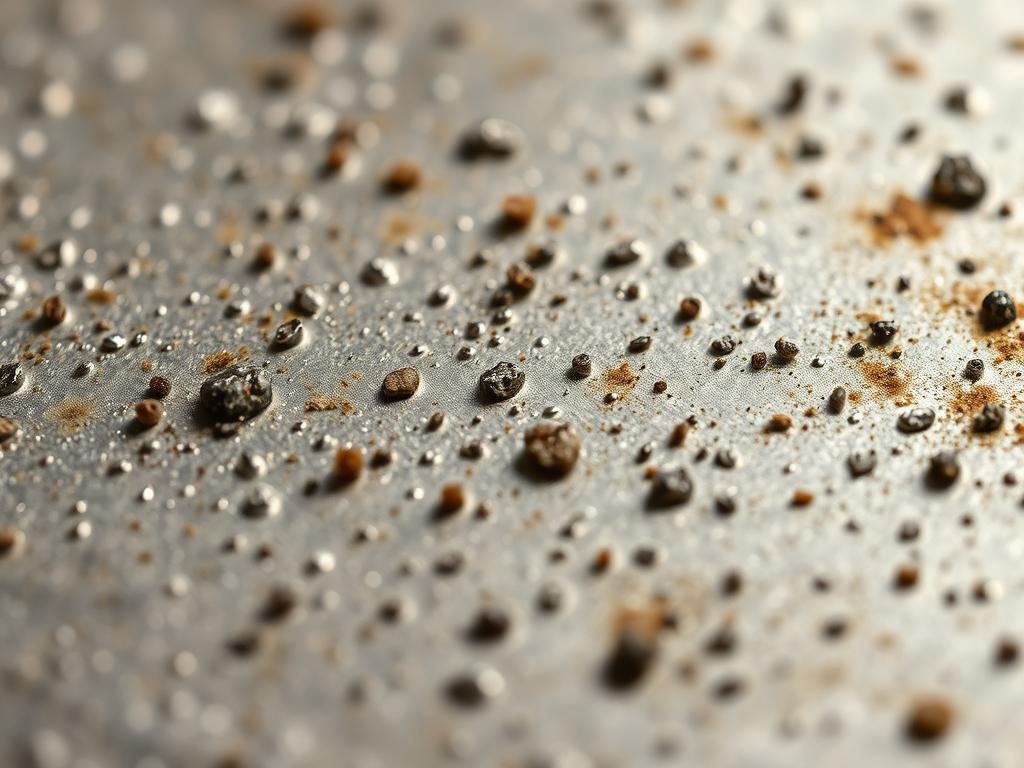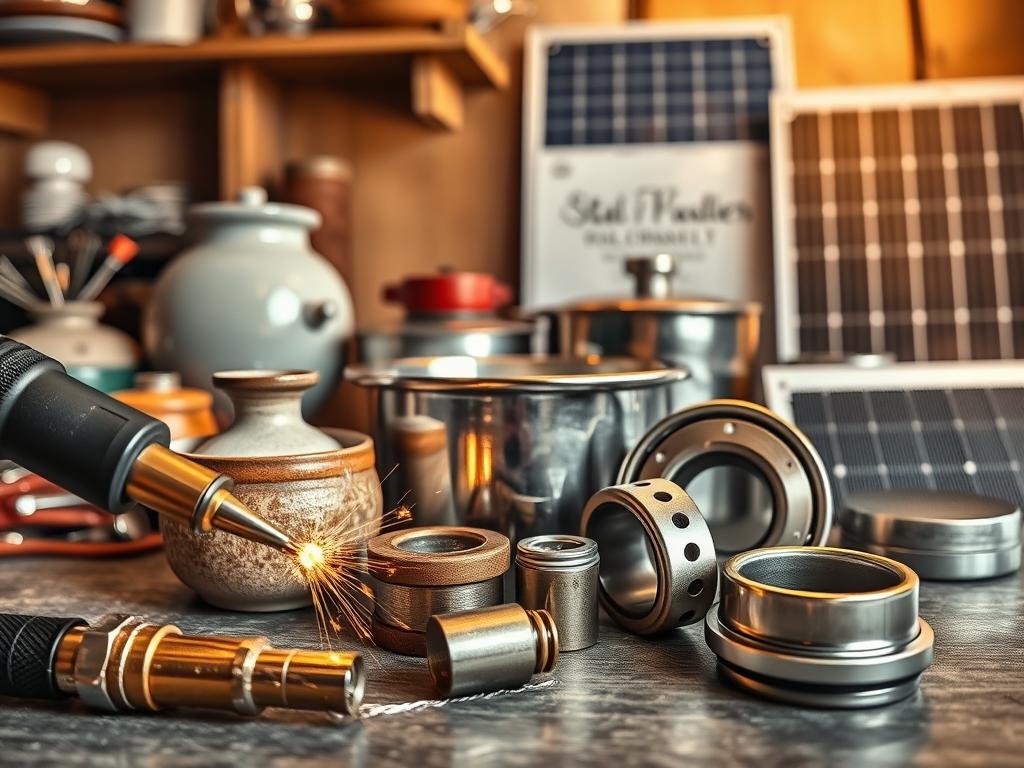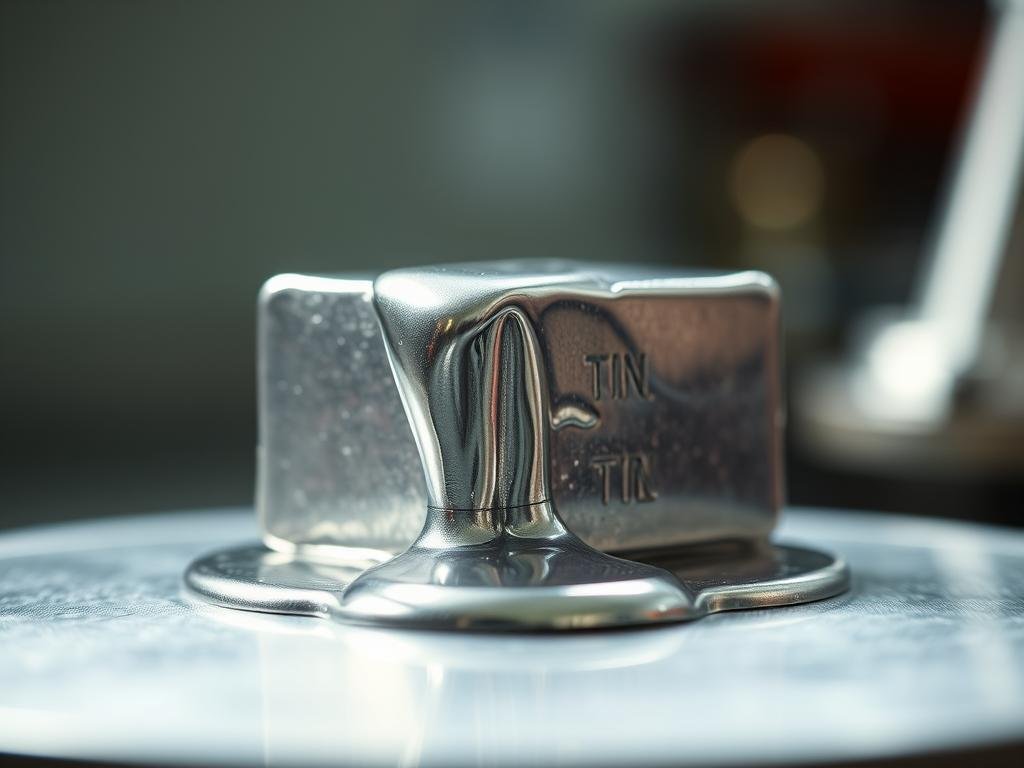Nearly half of modern solder joints rely on tin alloys, and that single fact shows how small shifts near 231.93 °C can ripple across global assembly lines.
This Ultimate Guide defines whats is the tin melting point and why that temperature matters for design, processing, and quality control in precision work.
We clarify baseline properties that drive behavior at this threshold: a thin SnO2 film gives corrosion resistance, and beta form stays soft and ductile above room conditions.
Engineers and buyers get exact temperatures used through this guide so specifications are unambiguous. Rapidaccu brings over 15 years of CNC machining and manufacturing experience, helping teams predict part performance during solder reflow, thermal joining, or low-heat casting.
Finally, we preview how impurities, pressure, and oxidation nudge values in practice, and why allotropy matters for storage in cold climates and for repeatable outcomes.
Quick Answer: Tin’s Melting Temperature at a Glance
For engineers who need a fast reference, pure tin reaches liquid at a narrow, well-defined temperature: 231.93–232 °C (449.47–450 °F). This melting point tin value is the baseline used when setting ovens, hot plates, or reflow profiles.
Its boiling temperature sits much higher at 2602 °C (4716 °F), so thermal margins are large between phase change and vaporization. At room conditions, β‑tin is the stable allotrope; α‑tin appears only below about 13.2 °C (55.8 °F).
- Use the 231.93–232 °C quick-reference to calibrate equipment and avoid overshoot during melting.
- Remember this number applies to pure tin; alloys can shift the melting temperature significantly.
- Verify sensor accuracy to within a few degrees when working near this critical point.
| Property | Value (°C) | Notes |
|---|---|---|
| Melting temperature | 231.93–232 | Pure tin; rapid transition to liquid once reached |
| Boiling temperature | 2602 | Far above melting; not relevant for most heating steps |
| Room-phase | β‑tin (stable) | Relevant for short heating cycles and handling |
Rapidaccu supports teams that need reliable specs to keep prototypes and production on schedule. Treat this specification as a control point that ties into alloy choice, coatings, and soldering parameters for consistent results.
How Tin’s Melting Point Compares to Other Metals
Compared with common workshop metals, tin sits near the low end of usable temperature ranges.
At about 232 °C, tin melts well below aluminum (660 °C) and copper (1084 °C). That gap makes tin and its alloys ideal for low-energy joining and soldering processes.
Tin also melts far lower than brass (~930 °C), cast iron (1127–1204 °C), and most steels. High-carbon and stainless steels require much higher heat, so designers avoid melting them in mixed assemblies.
Groupings matter. Lead (328 °C), zinc (420 °C), and magnesium (349–649 °C) share lower melting profiles with tin. These metals shape choices for low-heat production and quick cycle times.
At the other end, titanium (1670 °C), platinum (1770 °C), and tungsten (3400 °C) are extreme outliers. They demand specialized fixtures and long preheat cycles.
- Use tin-related data to pick fixtures and preheat settings that protect the most heat-sensitive part.
- Let comparative temperatures guide DFM decisions and joining method selection.
- Rapidaccu advises balancing melting considerations with machining, finishing, and assembly for reliable prototypes and production.
| Metal | Melting (°C) | Category | Design note |
|---|---|---|---|
| Tin | 232 | Low | Good for low-energy soldering and coatings |
| Aluminum | 660 | Moderate | Requires higher process heat than tin |
| Copper | 1084 | High | Used where conductivity and strength matter |
| Steel (carbon/stainless) | 1371–1593 / 1375–1530 | Very high | Melting impractical for joining with low-melt metals |
| Tungsten / Platinum / Titanium | 3400 / 1770 / 1670 | Extreme | Specialized processes and fixtures required |
whats is the tin melting point and how it relates to boiling point
A precise thermal marker separates solid and liquid behavior and guides safe heating in assembly lines. Pure tin reaches its transition at 231.93–232 °C (about 450 °F). This value marks equilibrium where solid and liquid phases coexist and flow begins.
Process implications
- Use tight thermal profiles and short dwell just above 231.93–232 °C to enable controlled wetting and fill without harming nearby polymers.
- Monitor ramp rates to limit runout and preserve coatings, finishes, and dimensional tolerance.
- Account for oxide films and alloying; both alter how fast the solid–liquid shift occurs and affect repeatability.
- Remember boiling at 2602 °C sits far outside normal operations, so vaporization is not a practical risk—oxidation and surface change are.
| Property | Value (°C) | Process note |
|---|---|---|
| Transition (solid–liquid) | 231.93–232 | Controls wetting, solder flow, low-heat casting |
| Boiling | 2602 | Far beyond production temps; safety margin large |
| Practical risk | Below boiling | Oxidation and surface effects dominate |
What Shifts Tin’s Melting Point in Real-World Conditions
Variations in composition, surface state, and ambient pressure all nudge thermal behavior during heating. That makes a lab number a starting point, not a guaranteed result for production.
Impurities and alloying
Trace impurities can widen the solidus–liquidus range and alter onset of flow. An alloy with copper, for example, raises bulk melting behavior; bronze melts near 913 °C, far above pure metal values.
For solder and cast parts, verify certificates and batch data to avoid surprises when temperatures must stay tight.

Pressure effects
Higher pressure shifts phase equilibria upward, so melting requires more heat under compression. Most shop-floor work stays near ambient pressure, but presses or sealed tooling can change thresholds.
Surface oxidation and microstructure
A thin SnO2 film acts as a barrier and raises apparent melting behavior until flux or mechanical action clears it. Choose fluxes and shielding atmospheres to restore wetting quickly.
Grain size and prior heat treatment also matter. Finer grains often improve flow consistency while coarse or strained grains can delay uniform transition.
- Control cleaning, flux, and atmosphere to limit oxidation and contamination.
- Confirm alloy composition and document process parameters per batch.
- Use sample runs to validate effective melting point tin for each variant.
| Factor | Effect | Action |
|---|---|---|
| Impurities | Wider melt range | Material certification |
| Pressure | Raises threshold | Plan for sealed tooling |
| Oxidation / grain state | Alters wetting | Use flux / control heat history |
Allotropes and “Tin Pest”: Structure-Temperature Behavior
At low service temperatures, tin can change crystal form and that shift has outsized effects on parts and assemblies.
β‑to‑α transformation at 13.2 °C
Below about 13.2 °C a white, ductile metal can slowly convert into a brittle, gray form. This transition, often called tin pest, breaks continuity and creates powdery regions that weaken plated surfaces.
How alloys prevent degradation
Adding small amounts of antimony or bismuth stabilizes the stable crystal and suppresses the phase change. Commercial alloys use trace elements to keep finishes intact during cold storage and transit.
Implications for electronics and components
Pure finishes on leads can degrade in cold conditions and later shed conductive debris when they warm. That debris risks shorts on boards and assemblies.
- Prefer alloyed finishes for parts destined for sub-freezing service.
- Control storage and shipment temperatures to protect reliability.
- Include stability checks in process plans and design reviews.
| Aspect | Risk | Mitigation |
|---|---|---|
| β→α transformation | Embrittlement, powdering | Alloying with Sb/Bi |
| Commercial grades | Low risk in normal logistics | Specify 99.8%+ grades or alloyed finish |
| Electronics | Conductive debris, shorts | Use alloyed plating or controlled storage |
Rapidaccu collaborates with electronics and hardware teams to ensure materials and finishes remain stable under storage and service temperature swings. That protects components and supports long-term reliability without adding undue cost.
Applications Enabled by Tin’s Relatively Low Melting Point
A modest phase change temperature unlocks a range of practical applications across electronics, packaging, and light casting. This metal’s ease of flow lets teams join parts, protect surfaces, and form shapes with less energy than high‑temperature alloys.

Soldering in electronics
Low transition heat supports repeatable soldering. Common solders use tin‑based alloys to create precise, reliable joints at modest temps. That reduces thermal stress on components and shortens cycle time for mass production.
Coatings and plating
Tin plating on steel prevents corrosion in cans and food packaging. Thin, even coatings give long service life and preserve product safety without heavy process heat.
Molding and casting
Low melting alloys permit fast, low‑energy molding. Shorter heats mean faster cycles, gentler exposure for inserts, and lower overall manufacturing costs.
Specialized alloys and medical uses
Pewter blends and modern solders leverage wetting and flow to deliver form and finish. Medical formulations such as tin fluoride show stability and biocompatibility in controlled processes.
- Soldering: precise joints with consistent wetting for high yield.
- Coatings: corrosion resistance for steel cans and plated parts.
- Production: lower energy input, faster cycles, gentler thermal exposure.
- Alloys: pewter and modern solder families optimize flow and finish.
- CNC integration: machined features and finishes aid wetting and uniform coating.
| Application | Benefit | Rapidaccu role |
|---|---|---|
| Soldering | Repeatable joints at modest temp | Fixture design, mating features |
| Coating | Corrosion protection for steel | Surface prep, plating support |
| Low‑heat casting | Faster cycles, less energy | Prototype to production scaling |
With 15+ years delivering precision CNC parts, Rapidaccu supports these applications through accurate machining, fixture design for soldering, and surface prep for plating. That ensures parts meet fit, finish, and yield targets during production.
Manufacturing Implications: Process Control, Surface Finish, and Materials Choice
Controlled heating and tight process windows make the difference between a clean solder joint and a rework cycle in production.
Temperature windows: avoiding oxidation and preserving properties
Define narrow temperature bands that allow flow without prolonged exposure. A thin SnO2 layer forms in air and can hinder wetting if runs exceed safe limits.
Use shielding gases or flux to limit oxidation and to protect finishes during brief rises above the critical point and melting temperature.
From prototypes to production: precision in heating and handling
Document heating profiles, ramp rates, and hold time during pilot runs. That documentation keeps scale-up predictable and repeatable.
Good surface prep from CNC work—clean edges, consistent roughness, and controlled burrs—improves plating uniformity and solderability for downstream electronics assemblies.
How Rapidaccu supports tin-containing components in CNC manufacturing
Rapidaccu combines 15+ years of CNC experience with process planning to reduce variability. We review fixtures, thermal fixturing, and handling to protect coatings and dimensions.
- Set time-at-temperature limits and choose flux or atmosphere per material conditions.
- Align surface finish targets with plating and soldering process needs for reliable joints.
- Maintain consistent fixturing and thermal ramps to cut rework and preserve tolerances.
| Focus | Benefit | Action |
|---|---|---|
| Temperature control | Less oxidation, consistent joints | Documented profiles, shielding |
| Surface finish | Better plating, improved wetting | Edge breaks, cleanliness standards |
| Scale-up | Repeatable production yields | Pilot runs, fixture alignment |
Conclusion
Understanding this metal’s thermal behavior helps engineers choose safe, repeatable joining methods for products and assemblies.
Pure material liquefies at about 231.93–232 °C and boils near 2602 °C. Alloying, impurities, pressure, oxidation, and microstructure shift effective temperature and flow. That makes careful specification and quality checks essential in manufacturing.
Because a β→α transition occurs near 13.2 °C, alloy choices such as antimony or bismuth stabilize finishes for cold storage. Use documented profiles, flux, and surface prep to protect wetting and avoid defects during soldering, plating, or low‑heat casting.
Rapidaccu stands ready to support designs from CNC prototype to mass production, delivering accurate parts, consistent finishes, and process controls that keep assemblies reliable and on schedule.

